 by our College Data Analytics Team
by our College Data Analytics TeamGTU Berkeley total enrollment is approximately 213 students.
See racial/ethnic breakdown for all students.
Male/Female Breakdown of Graduate Students
About 44% of full-time grad students are women, and 56% men.
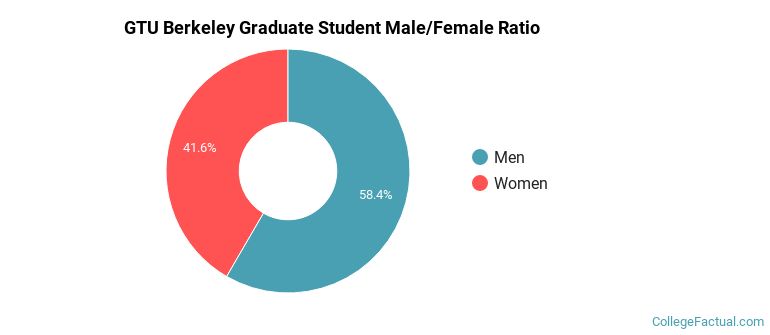
For the gender breakdown for all students, go here.
GTU Berkeley Racial-Ethnic Breakdown of Graduate Students
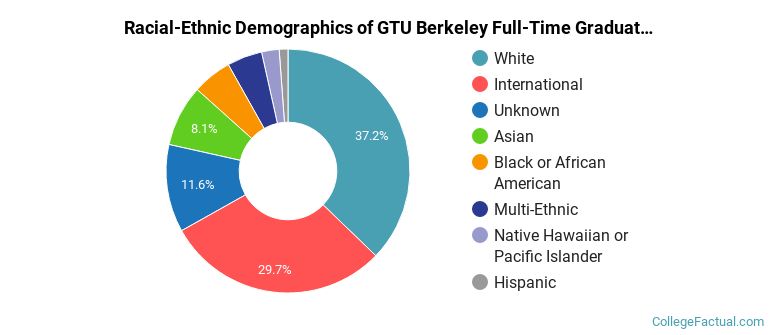
| Race/Ethnicity | Number |
|---|---|
| International | 62 |
| White | 58 |
| Unknown | 21 |
| Asian | 12 |
| Black or African American | 9 |
| Multi-Ethnic | 6 |
| Hispanic | 3 |
| Native Hawaiian or Pacific Islander | 3 |
See racial/ethnic breakdown for all students.
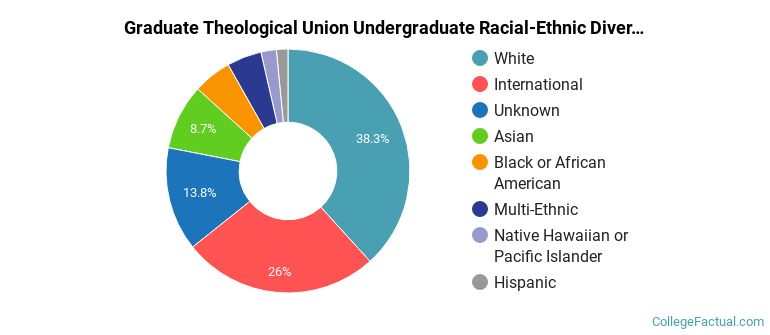
| Race/Ethnicity | Number |
|---|---|
| White | 64 |
| International | 62 |
| Unknown | 49 |
| Asian | 12 |
| Black or African American | 10 |
| Multi-Ethnic | 9 |
| Hispanic | 4 |
| Native Hawaiian or Pacific Islander | 3 |
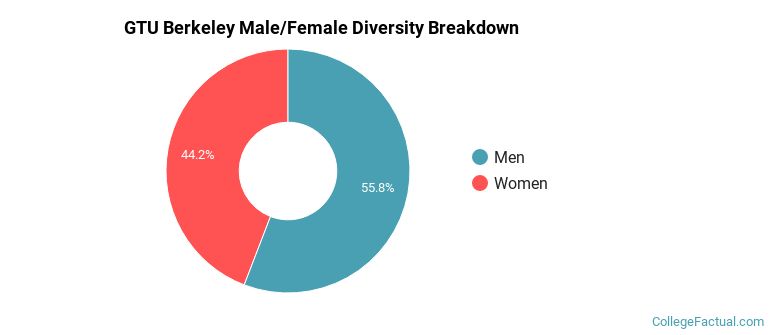
There are approximately 103 female students and 110 male students at GTU Berkeley.
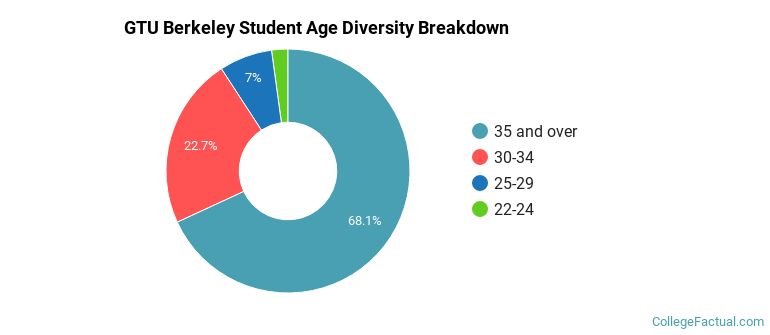
| Student Age Group | Amount |
|---|---|
| 35 and over | 126 |
| 30-34 | 42 |
| 25-29 | 13 |
| 22-24 | 4 |
| 18-19 | 0 |
| 20-21 | 0 |
| Under 18 | 0 |
Footnotes
*The racial-ethnic minorities count is calculated by taking the total number of students and subtracting white students, international students, and students whose race/ethnicity was unknown. This number is then divided by the total number of students at the school to obtain the racial-ethnic minorities percentage.
References
Department of Homeland Security Citizenship and Immigration Services
Find out how College Factual created their Diversity Rankings.